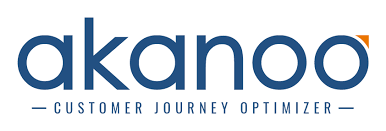 Guest Post Author: Akanoo
Guest Post Author: Akanoo
Since Akanoo was founded in 2013, they became the technology leader in onsite marketing and developed their expertise in the area of conversion optimization and onsite-based retargeting. In 2016, the company won the Rising Star Award by bevh and was ranked 2nd fastest growing digital SaaS company in the Gründerszene Ranking 2017. Today, Benjamin Ferreau is leading the 20-people-sized startup and boosts the transition from startup to established brand in the eCommerce industry.
In the last blog post, you have been introduced to the basics of the Customer Journey Index – with this article, we would like to go more in-depth and talk about the exact formulas for metric calculation in each journey section as well as present you the first Benchmark values we generated so far. So let’s get started!
Model Premises
To recapture what we wrote about last time, here’s the overview of the included metrics again:
- Landing to Basket
- Basket to Order
- Order to Check-Out
- Landing to Check-Out
- Return Rate
- [Referral to other Channel]
The first four metrics each describe a time-window within the on-site customer journey. To define these metrics in a way that they actually tell us something about a web shop’s performance within the single journey sections, we tried to figure out the most relevant sub metrics that should be the basis for calculation. This is what we came up with – the most crucial indicators for on-site journey performance in our opinion:
- Time on Site: The time that the individual user spends on your website
- Page Views: The number of sub-pages that the individual user has seen
- Amount (of Visitors): The number of all visitors of your website within a defined period
- Comeback (Rate): The percentage of all visitors that come back to your website after a tab switch
To be able to put these very diverse sub-metrics into one wholistic formula, each of them has to be brought into the form of a decimal digit score. Here’s the method we defined so far:
- Time Score (calculated from Time on Site): [Øtime(not converted) – Øtime(converted)] / Øtime(converted)
- Page Score (calculated from Page Views): [Øpv(not converted) – Øpv(converted)] / Øpv(converted)
- Amount Score (calculated from Amount): % of sessions that converted
- Comeback Score (calculated from Comeback Rate): % of sessions that converted even though visitors switched the tab at some point
When we say “converted”, keep in mind that for the first three metrics, it’s all about micro conversions (microversions, as we like to put it), not visit-to-purchase conversions.
So with that given: How can metric calculation be done in the most effective way?
Generating the Formulas
Metric 1-4: The Journey Sections
Generally speaking, the main metric must always be created by weighting the four sub-metrics (or: the generated scores) against each other, of course. So the crucial question is: What should the weighting look like? This is our idea so far:
- 1/6 for Time Score and Page Score
- 1/3 for Amount Score and Comeback Score
Here are our thoughts on why to do it this way: After having analyzed more than 440 million sessions from the year 2017, we found it to be the right thing to strive for a balance between the main dimensions Behaviour (Time on Site and Page Views), Visitors (Amount) and Retention (Comeback). So we decided to summarize Time on Site and Page Views to ultimately represent 1/3 of the formula in total (also, they show a high correlation with each other).
Also, when connecting the four sub-metrics with each other, we have to keep in mind that for Time Score and Page Score, a lower value is better than a higher one, while for the other scores, a higher value is better than a lower one. For that reason, just adding up the numbers will not work. This is what we calculate instead:
1/6 * (1 – Time Score) + 1/6 * (1 – Page Score) + 1/3 * Amount Score + 1/3 * Comeback Score
Also, we face the problem that not all scores will fit into the interval [0, 1]. Some scores dominate while others are being dominated. For example, Amount Score may appear mainly in the interval [0.5, 0.6], while Comeback Score may appear mainly in the interval [0.01, 0.02]. Simply putting the numbers together would give the Amount Score a way stronger influence on the final index value than the Comeback Score. In order to solve this challenge, our idea is to multiplicate each score with an individual factor, so that we end up with a balanced influence of each of them. These factors have been researched by analyzing all sub-metrics throughout all the online shop data we collected – and we aimed to set them in a way to end up with a relation of ⅙ + ⅙ + ⅓ + ⅓ again. These are the factors we calculated:
- Landing to Basket: 1/24 (Time Score), 1/24 (Page Score), 11/24 (Amount Score), 11/24 (Comeback Score)
- Basket to Order: 3/24 (Time Score), 3/24 (Page Score), 9/24 (Amount Score), 9/24 (Comeback Score)
- Order to Checkout: 3/24 (Time Score), 3/24 (Page Score), 9/24 (Amount Score), 9/24 (Comeback Score)
- Landing to Checkout: 1/24 (Time Score), 1/24 (Page Score), 11/24 (Amount Score), 11/24 (Comeback Score)
Although we do currently think these factors are important to make sense of the collected data, they certainly are an important aspect to discuss. Do we actually need them?
But anyway: Putting everything together, we end up with the following formula for metric 1-4 – with individual factors (f) for each one of them:
1/6 * (1 – f * Time Score) + 1/6 * (1 – f * Page Score) + 1/3 * f * Amount Score + 1/3 * f * Comeback Score
Last, but not least, KPI 2 (Basket to Order) requires some kind of extra-tweak: To take the fact into account that journeys that result with more items in the basket take longer and comprise more visited pages, the number of basket items has to be part of the formula. This is our suggestion:
1/6 * (1 – f * Time Score / Ø Number of Basket Items) + 1/6 * (1 – f * Page Score / Ø Number of Basket Items) + 1/3 * f * Amount Score + 1/3 * f * Comeback Score
Metric 5: Return Rate
As this metric is just about reflecting the share of returning website visitors, its “formula” is really simple:
Number of returning visitors / number of visitors
Metric 6: [Referral to other Channel]
In case companies operate with an omni-channel approach, the Customer Journey Index can also be used for the metric Referral to other Channel – the share of users who are referred from one channel to another. This can for example be the case when an online shop refers some of its visitors to an offline store to try the sneakers in real-life and not having to guess, if the shoe will actually feel comfortable.
This “formula” is quite easy as well – very similar to a classic Click-Through-Rate (Clicks / Impressions), actually:
Number of successfully referred visitors / number of referred visitors
The Index Figures
Last but not least, we would like to present you the first Benchmark Values of the Customer Journey Index, originating from the consumer behaviour of more than 440 million sessions in the year 2017.
| Landing to Basket | 0.12 |
| Basket to Order | 0.62 |
| Order to Check-Out | 0.63 |
| Landing to Check-Out | 0.08 |
| Return-Rate | 0.36 |
These index figures offer you a starting point to look at, if you want to compare yourself with the benchmark of several eCommerce businesses on how they perform along each phase of the onsite customer journey.
(Ultimately, the metrics set the standard for a five-star evaluation – as a simple rule of thumb: If you calculate the metrics on your own and your results are above the benchmark, you are performing better than the average German eCommerce business. (In case you wonder why we decided to use a star-evaluation-system – the reason is quite simple: Because everyone knows how it works (mytaxi, Amazon, etc.) and it is easy to relate to.)
HEADS UP: In case you calculate these metrics for your own web shop, them alone will not help you evaluate your onsite customer journey performance. Even though it can generally be said that, the higher the number the better you perform, you can only make sense of them by comparing them with the index figures we just presented you.
Also, it has to be stated that comparing the value 0.12 from Landing to Basket with 0.63 from Order to Check-Out does not make any sense, because these numbers are not normed neither. So it may happen that the performance of your onsite customer journey can relatively be better in the first phase compared with the third phase, even though the first phase shows a lower value. This is definitely one of the key aspects that have to be solved down the road and that can be a good topic for discussion: We’re already working on a solution to make sure the numbers can directly be compared to each other in the future.
In case you already have an idea on how this can be done, feel free to share your thoughts via the comment section and discuss with us!
We hope you enjoyed reading this article. In case you have any questions or wish to contact us for any other reason, feel free to do so at cji(@)akanoo.com
